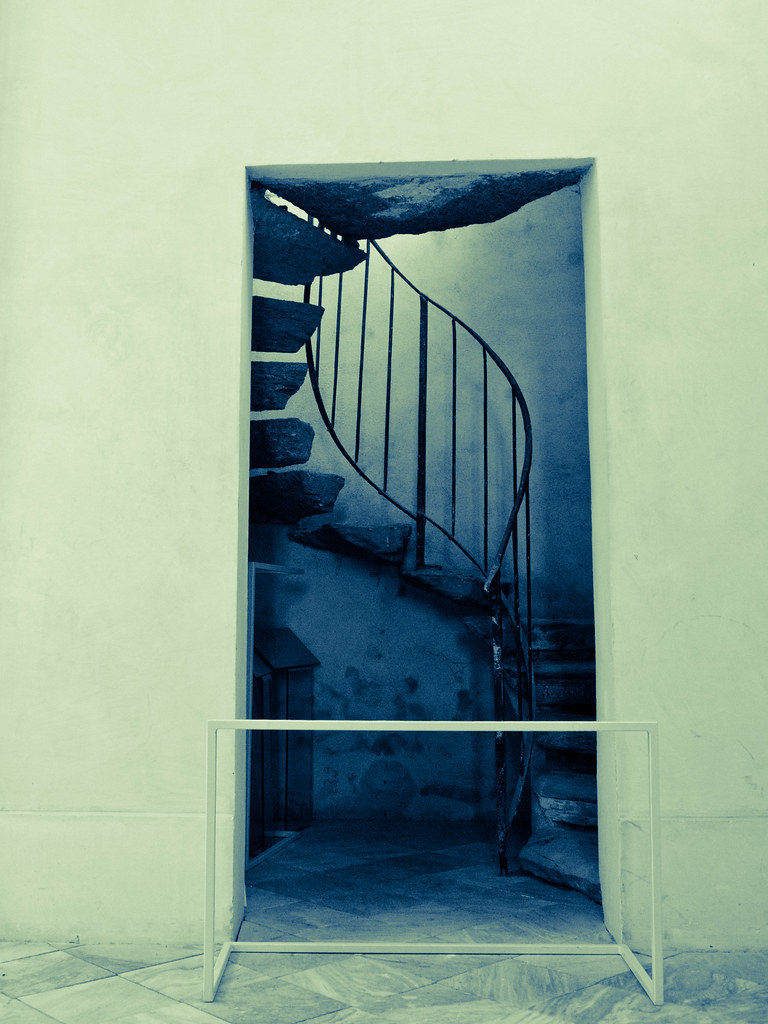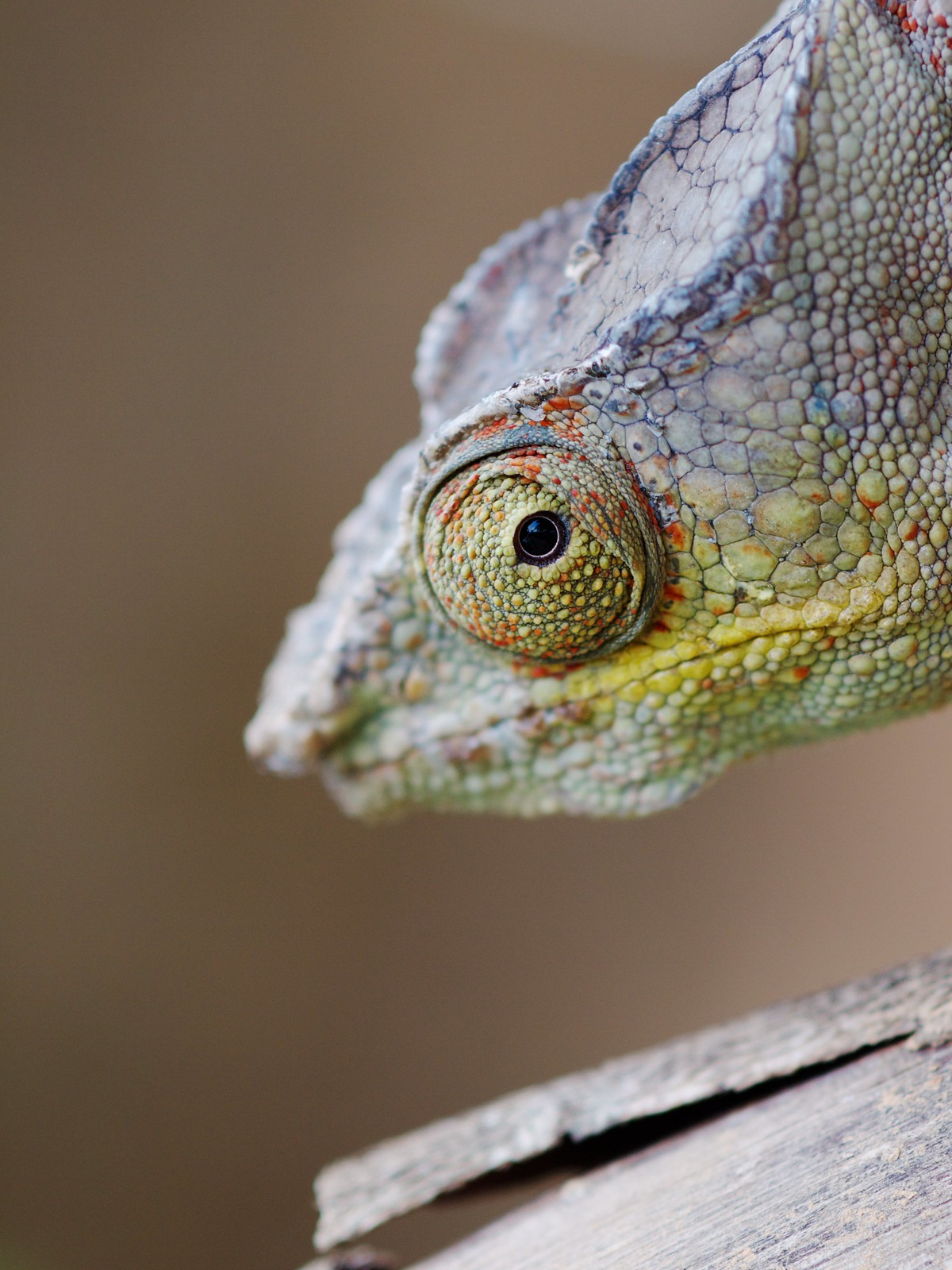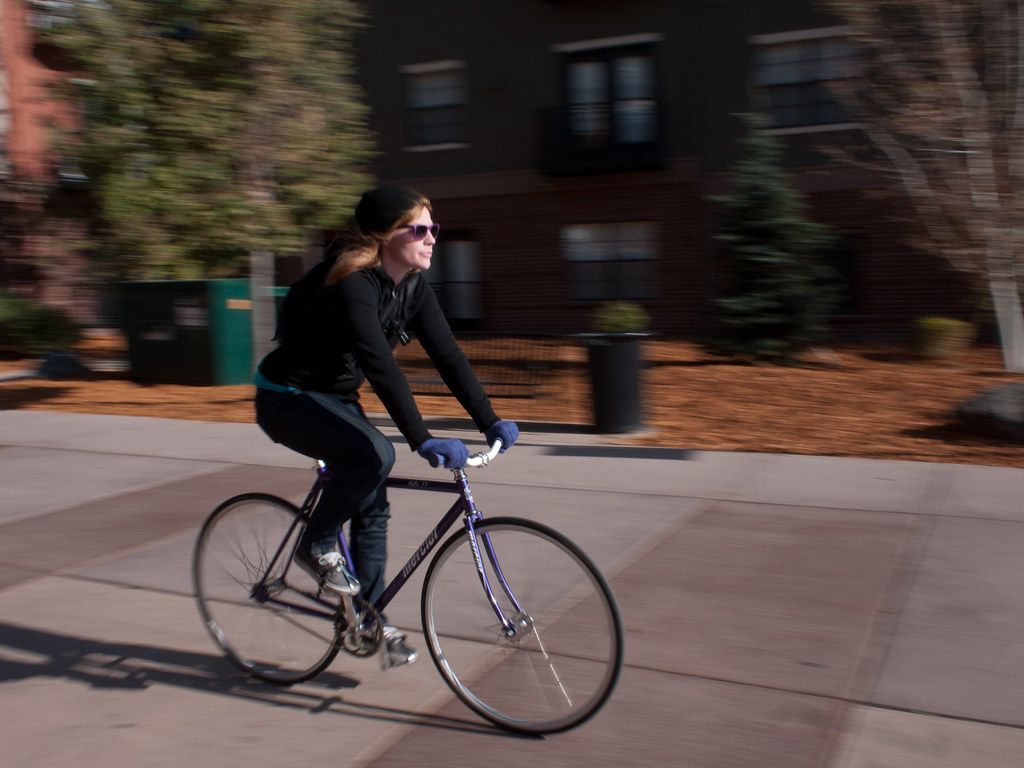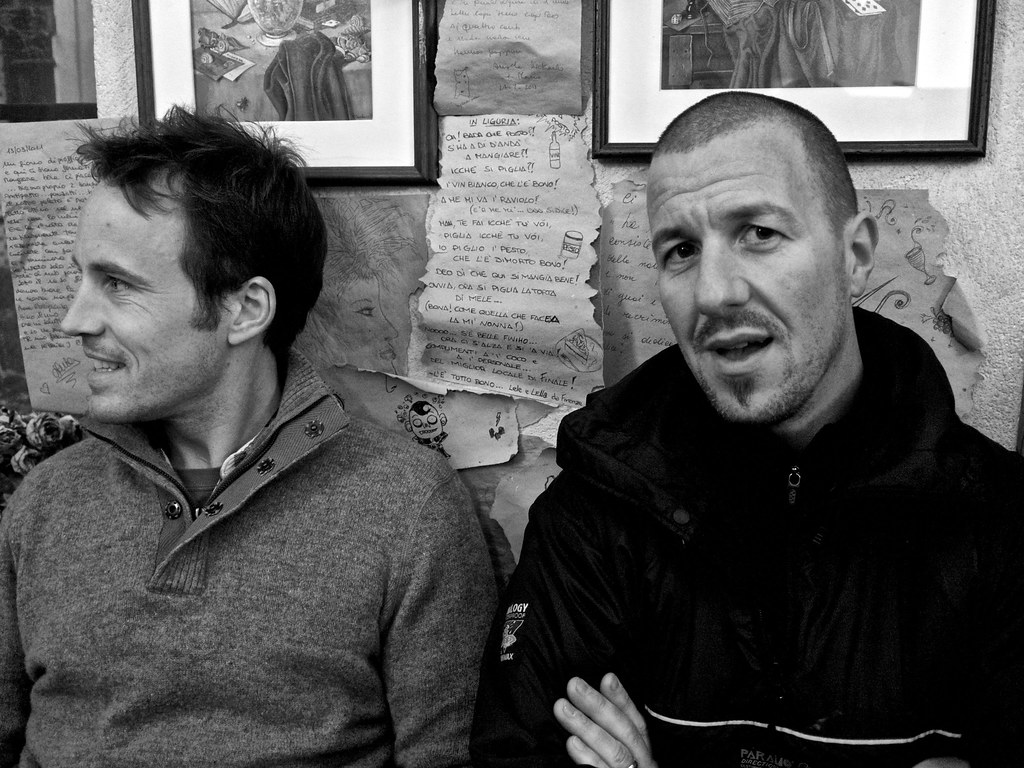It’s been quite some time now that I have gone back to DSLRs, but the little Panasonic GF1 is still a constant presence in my backpack. In the meantime, Panasonic has churned out countless other iterations on the same micro four/thirds concept; but to me it has somehow watered down the concept and only the latest one (GX1) seems to be the true successor of the GF1.
I think it’s only appropriate to post now a few words on my GF1; I know, it is indeed a very late review1 but it could be of some interest to cheapskates that are looking for a nice and little second-hand camera (or maybe convince those of you affected by GAS2 that the GF1 is still “good enough”)

what I said at the very beginning
It is true what everybody said back when the GF1 came out; this is indeed a camera that puts the fun back into photography. Small enough to carry it everywhere on my bike rides, squeezed in my backpack between a sandwich, a sweaty t-shirt and a spare tube. And with plenty of photographic power to shame most other DSLRs.
In august 2010 I wrote a short post titled “my next camera”; the month after I happened to be in Livigno and by pure chance I bought the GF1.

my lenses
I don’t have an ideal set of lenses; well to be honest I don’t even have multiple lenses, but just the one little crappy Olympus 17mm f/2.8. It’s a lens that always come up second when compared to the Panasonic 20mm f/1.7 but it does offer a slightly wider field of view (34mm-equivalent as opposed to the 40mm-equivalent of the Panasonic). The problem is the maximum aperture, only f/2.8; it is this stop and a half that bothers me more than the optical defects.
I also have an adaptor ring for Nikon lenses and a Pinwide, which is a plastic cap with a tiny hole in the middle; however both of these things were stolen from my house last January when thieves broke into my house (they also stole my Nikon F70 — a film SLR — and more annoyingly a perfectly good Nikon AF 20mm f/2.8).
The adaptor ring allowed me to use two Nikon lenses: an old manual-focus 105mm f/2.8 Micro and a 50mm f/1.8. The 50mm became a very light long-lens (100mm-equivalent) which was easy to use and gave me incredibly good results. The 105mm is too big and heavy for this camera and I was only able to use it effectively when mounted on a tripod.

primes
Despite the shortcomings of the Olympus 17mm f/2.8, this is a lens that shines on the GF1 as it makes it even more compact and minimalistic. I don’t particularly regret zoom lenses since I have always used (D)SLRs with fixed lenses; I still have very fond memories of the AF 35mm f/2 which I used a lot on my first autofocus film camera (Nikon F70). The GF1 with this lens (a 34mm-equivalent) replicates almost perfectly that vision I used to have with my old film camera.
I am not being very original here but I want to remember why shooting a fixed focal length (a ‘prime’) is so stimulating, fast, instructive and engaging:
- fast because you don’t need to decide which focal length to use before shooting, only shutter speed and aperture;

- stimulating and instructive because you need to walk and move around to make the picture you want, therefore fighting the propensity of using the zoom as a substitute for physically changing your position in space.

Finally, I just love watching the nerds that go around the world taking photographs with old film cameras and one small normal lens, or this new generation of quirky cameras (Sigma DP1, Fuji X100, and micro four/thirds such my GF1 or the Olympus EP1). It may happen in the near future that quirky cameras will rule the world and that will be the moment when I will go back to DSLRs, just because being trendy is not for me.

About primes, there is a something written by Steve Huff that I’d like to quote:
It’s all about simplicity and knowing what to expect from the camera. After a couple of weeks shooting with a camera like the X100/X1 you will start to be able to visualize in your head what your image will look like. You will know what angle to get, where to stand and you will get out of the “Zoom Lens” mindset, which IMO, makes you lazy. Now of course, sports shooters and wildlife guys need powerful zooms (or primes) but for most of us, including the hobbyists, it could be a great experience to just shoot with one lens and one lens only for a while.
I do it all the time. I could get by day to day with either a 35 or a 50. My favorite lens in the world is the Leica Noctilux, and right behind that the new 35 Summilux ASPH. I have shot with a 35 for months on end, and did the same with a 50. Did my photography suffer because of it? NO, in fact, it had the opposite effect.
Shooting ONLY a 35mm lens for say, 3 months, will open up your mind to other possibilities. You will not just aim, zoom and shoot but you will look around, think and ask yourself how you can get the best shot with what you have. Shooting at 35mm seems natural. You can get great environmental portraits and even normal portraits if you step back a bit. 35mm is great for landscape and urban shots. It kind of sucks you in to the image at times and is not too wide like a 24 or 28 might be, nor is it too constricted like a 50 can be in some situations.
shooting a gf1
I don’t really have tips or tricks. I could tell you that I usually use aperture priority, that I always have the camera set at 100 ISO and then I raise the ISO when I want rather than using auto-ISO settings; that I trust the AF generally, but not the advanced modes like multi-point AF or face-detection (I use the single central point then I simply focus and recompose). I don’t care about white balance as I aways shoot RAW.
In other words, my ideal camera is something with a hell of a sensor, fast AF but really really simple, matrix and spot exposure, availability of bright prime lenses and some knobs to switch from manual to aperture or shutter priority and to set either of those basic settings. Everything else is a plus that I don’t really use.
Having said that, I did experiment for a while with some settings that make heavy use of all the technical gizmos of these modern cameras; I call this mode street-stealth-photography (SSP) mode. The AF is set to face-detection, film mode to B/W Dynamic (contrast +1, sharpness +2, which is a pretty contrasty black and white), auto-ISO. I trust the camera to focus on people’s faces, I leave auto-ISO on limited to only reach 1600 ISO (which makes for quite a lot of noise but what I’m thinking is just snap something and bring it home).
The SSP mode helps when I shoot in difficult conditions, where speed is key and I don’t have time to choose shutter speed, ISO etc; saving also these precooked JPEGs with a rather incisive black and white helps when I want my photographs to be ready as soon as they are offloaded from the camera, skipping the RAW import and the inevitable tinkering that follows.

video
The GF1 makes the creation of small, easy videos a fun activity, and immediacy is the keyword here; the D7000 is more powerful but it requires a lot more effort. Craig Mod sums it up quite nicely::
The camera excels at capturing off the cuff snippets of moving-life along your travels.
These are two examples of little videos that I made with the GF1, the first one shot on the Mont Blanc in September 2010, the second during a snowfall in Oxford, later that year.
something negative for a change
Positive comments and reviews are listed at the end of this article. But there has been a certain review which was rather full of negative points which left me surprised. Different opinions etc, but here there is a quote from Thom Hogan’s review:
There are eleven (!) buttons and one controller on the back of the GF1 (…) And the rear dial is (…) two controllers because it has a “switch” built into the dial. All this extra work really didn’t make the GF1 “better” than the LX3 for controllability. (…) One thing that’s starting to bug me are the use of dedicated ISO, WB, and other buttons (arrayed in a circle and doubling as up/down/left/right buttons) plus the Quick Menu function. The Quick Menu function is good enough that a dedicated button isn’t really saving me much time and effort.
So even though one of the key selling points of DSLRs is to have lots of buttons and knobs so you don’t have to use menus (inherently slower), Thom finds that the GF1 has too many of them. I know what I would rather have these many buttons than a Quick Menu function. At first it may be confusing but if you use one camera you quickly learn to control it (while if you jump from one camera to another like many of these serial reviewers, I can see you could easily forget which is which). Immediacy is the key, especially with this type of camera.

what other people think
The main article I recommend to everybody that would like to not only know the GF1 a bit more in detail but also as an example of wonderful mash-up between tech writeup and travelogue is the “GF-1 field test” by Craig Mod. I have found interesting his perspective on the minuscule Panasonic 14mm too.
He also wrote something which at the time I judged lyrical and oh-so-powerful, but now it just seems a bit over-the-top; like something written by the guy who has never been to the mountains before and tries to say something new about a condition (climbing, the high mountains) that countless other adventurers have talked about with more knowledge and introspection. However, Mr Mod has definitely some affinity with words, and this rant is probably totally unjustified if he is as sincere as I wish him to be. Enjoy his Annapurna Moonrise because it also has some cool night shots made with the GF1.
Two good pieces also on wired.com: “Hands on” by Charlie Sorrell and a follow-up by the same author: “Why I no longer use the Nikon D700”.
Finally a proper review by Danny Choo and an interesting comparison with a heavyweight.
-
It seems like I’m not the only one to write about the GF1 in 2012, three years after it first appeared on the market. There is a nice commentary by Colin Steel which appeared earlier this year on one of those popular blogs. ↩
-
Gear Acquisition Syndrome. Everybody talks about it on the internet: google it up. ↩